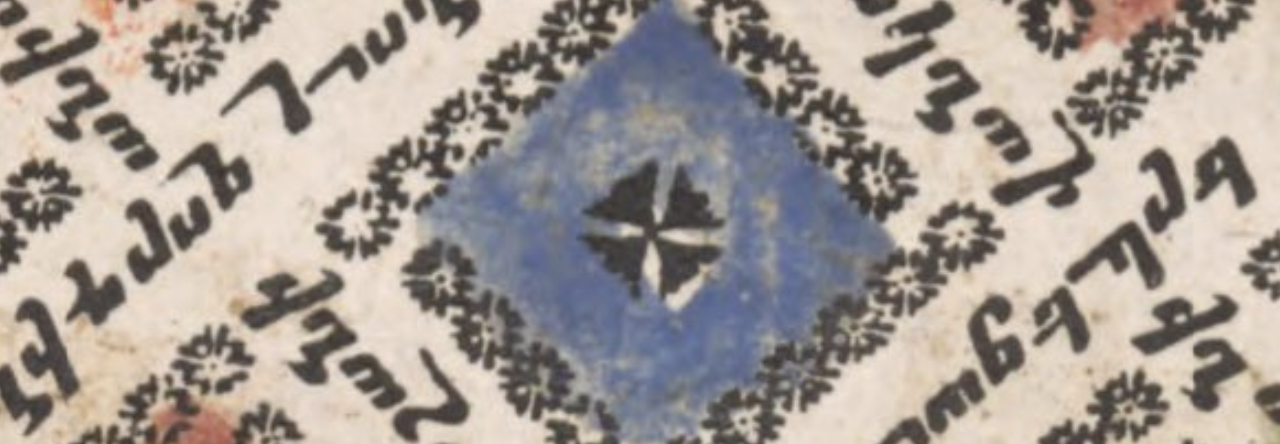by V. REV. DANIEL FINDIKYAN

Every book tells two stories.
The first is contained within its pages, be it a novel, an atlas, a cookbook or a chemistry textbook. The second is the book’s own story—how that particular volume came to be—from the printing press to the bookstore or dealer—traversing perhaps multiple owners and readers, until it falls into your hands.
Recently the Zohrab Center was the beneficiary of the library of the late and beloved priest Fr. Garen Gdanian, who passed away in 2013. While sorting through cartons of books, I noticed the elegantly embossed leather binding that is the hallmark of a precious old book.
 My suspicions were confirmed as I plucked it out of the box and carefully turned the book in my hands. Lustrous gilt edging glittered in my eyes while my fingers coursed over the grooves and ridges of the intricately embossed cover. Whoever bound this book spared no expense.
My suspicions were confirmed as I plucked it out of the box and carefully turned the book in my hands. Lustrous gilt edging glittered in my eyes while my fingers coursed over the grooves and ridges of the intricately embossed cover. Whoever bound this book spared no expense.
Stamped in gold leaf on the cover was this title: Առ բարձրաշնորհ Տ.Տ. Մաղաքիա Արքեպիսկոպոս Օրմանեան Պատրիարք Հայոց [T0 the Most Gracious Reverend Archbishop Maghakia Ormanian Patriarch of the Armenians].
He, of course, is the great Armenian churchman from the turn of the twentieth century, easily one of the greatest Armenian intellects of modern times, who served as Patriarch of Constantinople from 1896-1908.

Yet while Ormanian was a gifted and prolific author, the cover indicates that this book was not written by him, but addressed to him.
My first thought was that the book contained a letter directed to the Patriarch, who was a controversial figure. He resigned his position as Patriarch under pressure from political extremists, who had attacked him for his stubborn refusal to support any form of violence in the Armenians’ opposition to Abdul Hamid’s regime. Could this book be some anti-Ormanian diatribe?
But no. A gilt inscription on the book’s thin spine reads Կրօնի Ուսում [Course in Religion].
Indeed, turning to the title page, we read the full title of the work:
Illustrated Course in Religion from the Known to the Unknown, from the Impenetrable to the Believable. A Face-to-Face Course and Graded Study. Intermediate Level.

The author is a certain Tavit Khachgonts (1866-1918). It was published by the Balentz Press and Bookstore in Constantinople (Istanbul) in 1905.
Traversing the pages of our book we discover a comprehensive survey of the Armenian Church in 188 pages. It includes brief but incisive summaries of the Old and New Testaments, the history of the Armenian Church against the background of the universal church; key persons and saints, feasts and fasts, sacraments and liturgical services, vestments and vessels, church architecture and hierarchical structures, Armenian church pious customs and traditions, and more. A number of tables, charts and glossaries round out the extremely valuable manual, which may well be the finest one-volume survey of the Armenian Church that I have encountered.
The author adds this codicil to the title page:
Objective
To transmit Armenian Christianity to Armenian young people and to present their mother church as something for them to love.
A noble goal indeed.
So much for the first story.
The gilt inscription on the leather cover addressing the book to Patriarch Ormanian turns out to be a glorified gift tag. This copy was a personal gift. It was specially bound for the Armenian Patriarch, whose monogram, M.O., is stamped on the title page. This book once belonged to the great Maghakia Ormanian.
How did the book travel from the sacred galleries of the Armenian Patriarchate in Constantinople over 100 years ago to Fr. Garen’s personal library in Troy, New York?
The mystery continues. Read on… Continue reading “Noble Lineage: The Mysterious Story of a Book”
